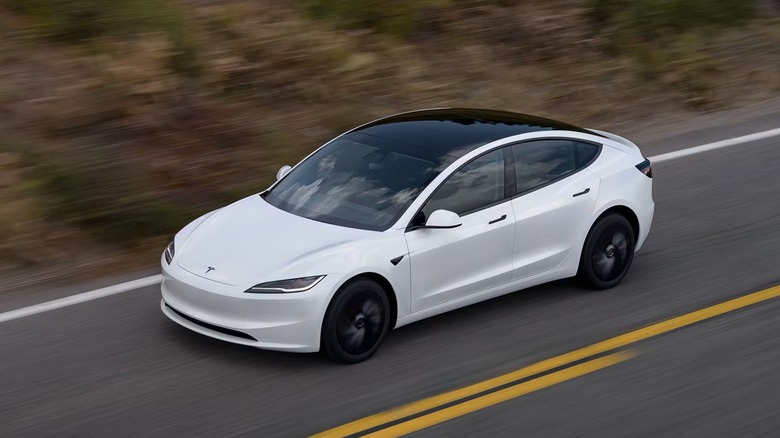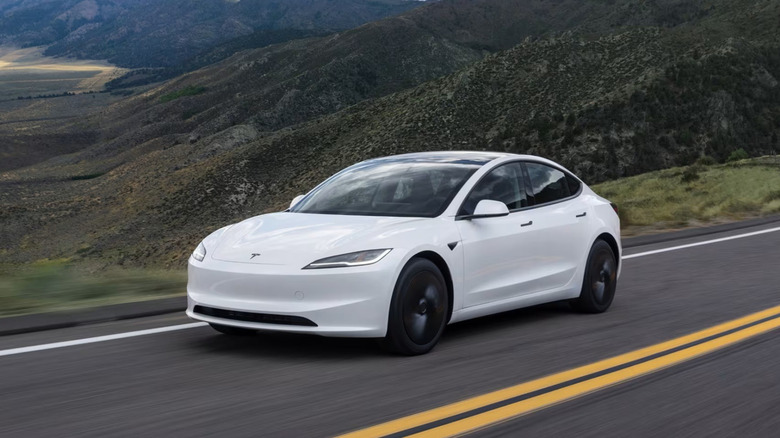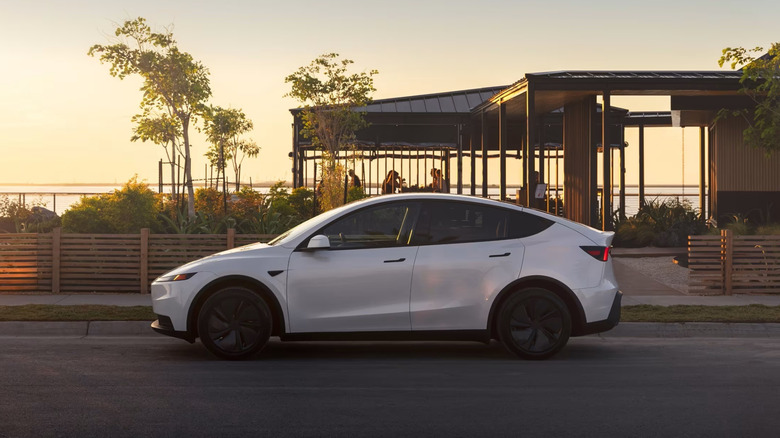Tesla's Cheaper EVs Have Arrived, But Many Fans Think They're A Waste Of Money
Generally speaking, when people think of EVs, affordability doesn't come to mind. Usually you picture something like a Nissan Versa, the current cheapest car in America at just $18,330 new, equipped with just enough to get you from point A to B.
By comparison, the cheapest Tesla models are still around $40,000, and they go up from there — a fact not helped by the dissolution of the $7,500 tax incentive for EVs as part of the Big Beautiful Bill. In response to the growing demand for actually inexpensive EVs, Tesla introduced brand new variants of the Model Y and Model 3 ranges, the so-called Standard Edition, which Elon Musk calls its affordable models. Tesla fans are not happy.
Tesla stock dropped by four percent immediately after the announcement, and people took to social media about this fiasco, with some arguing that this is basically Elon Musk trying to tempt people into buying the nicer versions of the cars, because few people want to spend nearly $40,000, and be seen as too poor to shell out an extra few thousand bucks for the nicer option. Moreover, the lineup lacks certain features which fans and owners have grown to enjoy, such as Autosteer.
It's either a poor business decision, or a clever marketing strategy to promote the mid and high-range variants, but it still requires all the tooling and lines to build the Standard Editions, not to mention filling dealerships with them. Arguments can be made for or against, but the wind is blowing against Tesla, and right at a time when the company faces stiff international competition from China, where BYD exceeded Tesla in sales. Let's explore more these cars and the business models behind everything.
What are the Standard Editions, anyway?
The main draw of these models, of course, is the price point: The Model Y Standard is $38,490 before any additional fees, and the Model 3 Standard is $35,490. Externally, the most obvious change is an even more minimalistic exterior design, with the car almost utterly devoid of anything apart from its silhouette, looking like a clay test sculpture with some bland paintwork in three colors: white, gray, or black.
This extreme minimalism carries over to the interior as well. The Model S and Model Y never featured instrument clusters anyway, but the Standard Editions take away other characteristic elements that fans loved about Teslas.
As for the features the Standard Editions lack, while they retain the sunroof, you can't see out of it from the inside. The headlights are heavily simplified, with no adaptive beams, and everything is housed in a single unit, meaning no fog lights or LED lightbars. The rims are 18-inch steelies, as opposed to 19-inch alloys, no AM/FM radio, eight instead of 15 speakers, no rear center-seat armrest, no adaptive shock absorbers, no autosteer, the list goes on.
This is as barebones as one can reasonably get in an electric car before you start taking away more crucial features. These models appeared just after the EV tax cut disappeared and Tesla's quarterly sales skyrocketed, meaning it's likely that this trim model is entirely reactionary to this phenomenon.
Why Tesla fans aren't pleased
There's, of course, the psychological impact of image. People go into eye-watering levels of debt to purchase premium editions of vehicles to bolster their projected image. A car is more than the sum of its parts, it's an extension of one's self-image to some people, so something as strikingly-basic as a Standard Edition Tesla doesn't appeal to this crowd.
Likewise, it doesn't appeal to Tesla owners who enjoy the perks associated with the brand — advanced technological features, automation, and clean minimalism without skimping on functionality. All of these have been cited as areas of complaint in the Standard Edition, at least for the price point.
Bear in mind that these are cars which don't cost substantially less than their Premium Edition counterparts, with the Standard only being around $5,000 less. It's a classic example of business psychology in action; make the Standard unreasonably high-priced so that potential owners will splurge that extra few grand to get the additional features, and feel like they're receiving an upgrade in the process.
There are various reasons why this model is hated, from the obvious trickery, to the fact that Tesla still needs to build them, which has its own problems. Assembling these cars takes production time away from the main attraction, and they will likely fill backlots if everyone goes for the Premium or above anyway. That said, it may appear questionable right now, but let's see how it plays out. Tesla's doing a number of other updates, such as its V14 Self-Driving Update, so this may be a drop in a larger bucket.


